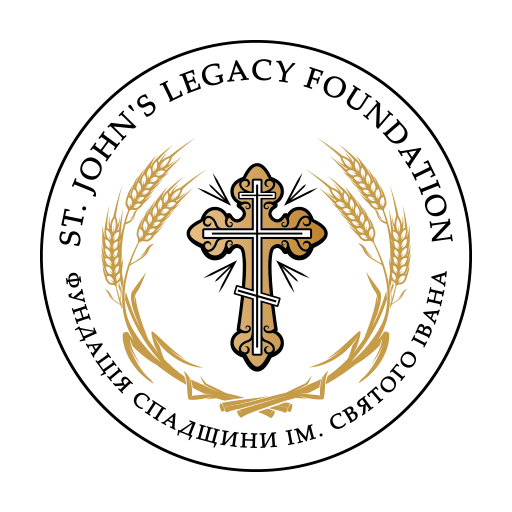Our Lady of Good Counsel Roman Catholic Church – Skaro (RCC)
Bishop Vital Grandin, OMI, of St. Albert, invited the closest priests from the Polish parish in Winnipeg to serve Strathcona and vicinity. The first priest to arrive was Fr. Wojciech Kulaway, on March 18, 1899. He stayed for eleven days, baptizing children and celebrating Mass at local homes. These soon became too small to hold the many people who attended Mass, so it was decided to build a chapel.
Construction began in 1901 and by 1904 the exterior of the church was completed. The building committee decided to dedicate the chapel under the patronage of “Our Lady of Good Counsel”. With the continued growth of the community, a larger church was planned. The cornerstone for the new sanctuary was blessed on September 30, 1917 and the first Mass was celebrated on Christmas Day, 1917. On August 15, 1918, almost a thousand people gathered to witness the consecration of the church by Archbishop Emile Legal.
In the years 1945–51 a fund was started to build a new church, the campaign intensifying with the arrival of Fr. Ignatius Lenckowski in 1958. The old building was dismantled in 1959 and the present structure was completed in the fall of 1960.
Grotto of Our Lady of Lourdes (Skaro Shrine)
In the fall of 1918, Fr. Antoni Sylla proposed the building of a small grotto. This idea appealed to the pioneer immigrants who were accustomed to wayside chapels in their mother country. Fr. Sylla approached Fr. Philip Ruh (1883–1963), who was then doing missionary work in Eldorena, as he was familiar with the Grotto of Lourdes in France. An Oblate of the Latin Rite and a native of Alsace-Lorraine, Fr. Ruh was allowed to serve Eastern Rite Catholics after he learned to speak Ukrainian.
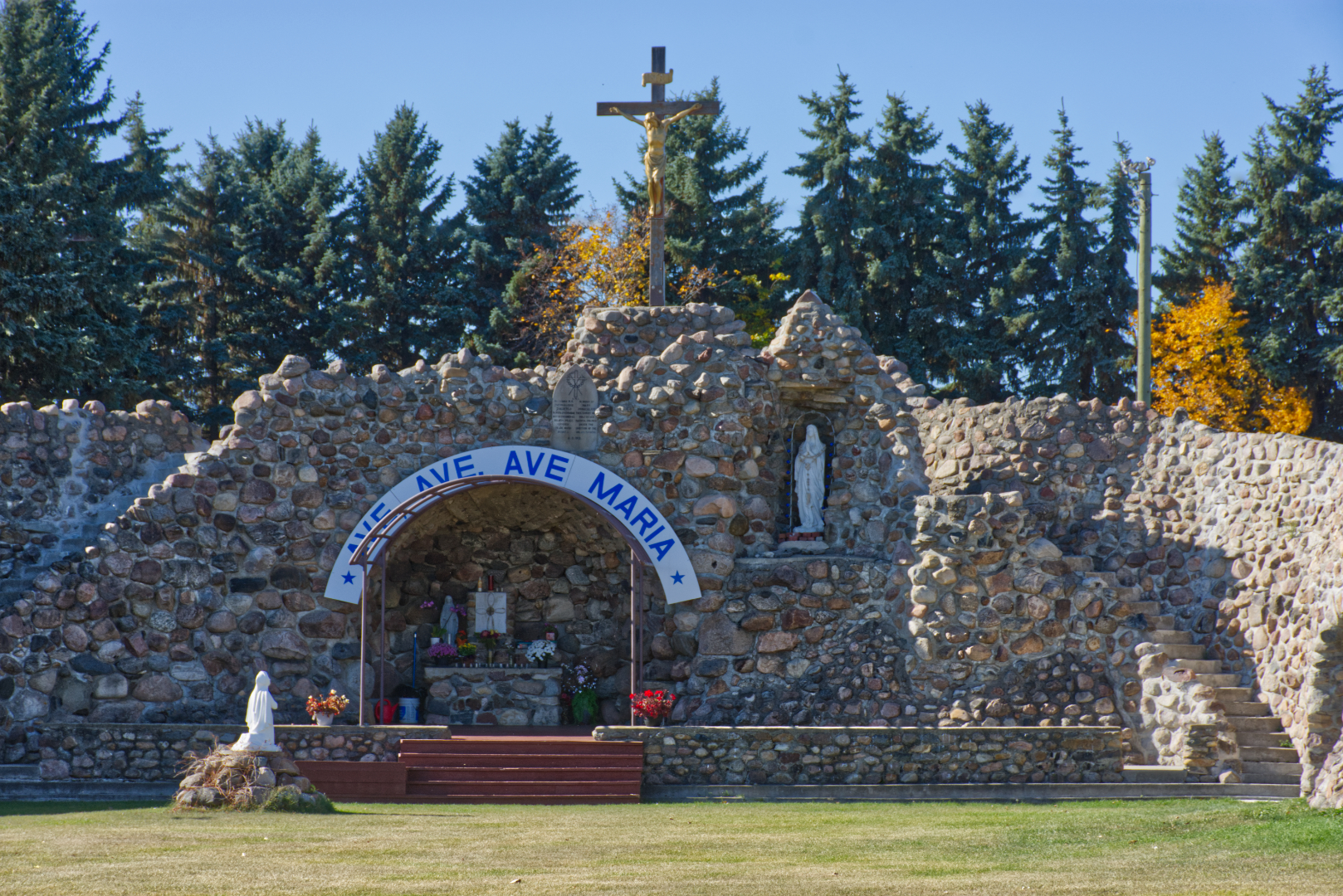

Fr. Ruh consented to make plans and to construct the grotto, provided the people supplied the materials and labour. A small grotto was intended, but Fr. Ruh would not agree as he envisioned a large monument. “If I build it, it must be big, otherwise, I do not start at all,” were his words. During the winter months each parishioner was asked to bring ten to fifteen loads of rocks and in June 1919 the work began. The Shrine site was soon buzzing with activity, with the entire community, young and old, working together on the project.
People were of the opinion that the undertaking would be finished in several days, but the rocks quickly ran out and their enthusiasm waned. Fr. Sylla urged the area residents to finish the grotto and slowly they came back with their plows and fresnos. It took two solid months, 600 loads of rocks and 300 sacks of cement to complete this replica of Lourdes.
On August 14, 1919, pilgrims arrived to offer their special prayers, and at sunset they gathered in procession to celebrate at the Grotto. Pilgrimages at the Shrine continue to this day; they are held each year on the evening of August 14 and during the day on August 15, drawing 3,500 to 4,000 people.
GPS Co-ordinates: 53.89258, -112.77810
Affiliation: Catholic Archdiocese of Edmonton
Our Lady of Good Counsel Roman Catholic Church – Skaro, AB
Roman Catholic Church of the Precious Blood – Krakow (RCC)
This area was originally served by a Polish missionary priest, Rev. Francis Olszewski, who made his home in the centre of the Polish and Ukrainian settlements that are now known as Krakow. This is the oldest Polish parish in Alberta and was dedicated to St. Casimir. A small church was erected in 1907, then replaced with the present sanctuary, built in 1934–35 and consecrated in the name of “The Precious Blood”.
Peter Lipinski painted the main altar. Currently Mass is celebrated once a year.
See HERE for more information on Peter Lipinski.
See HERE for more on St. Casimir.

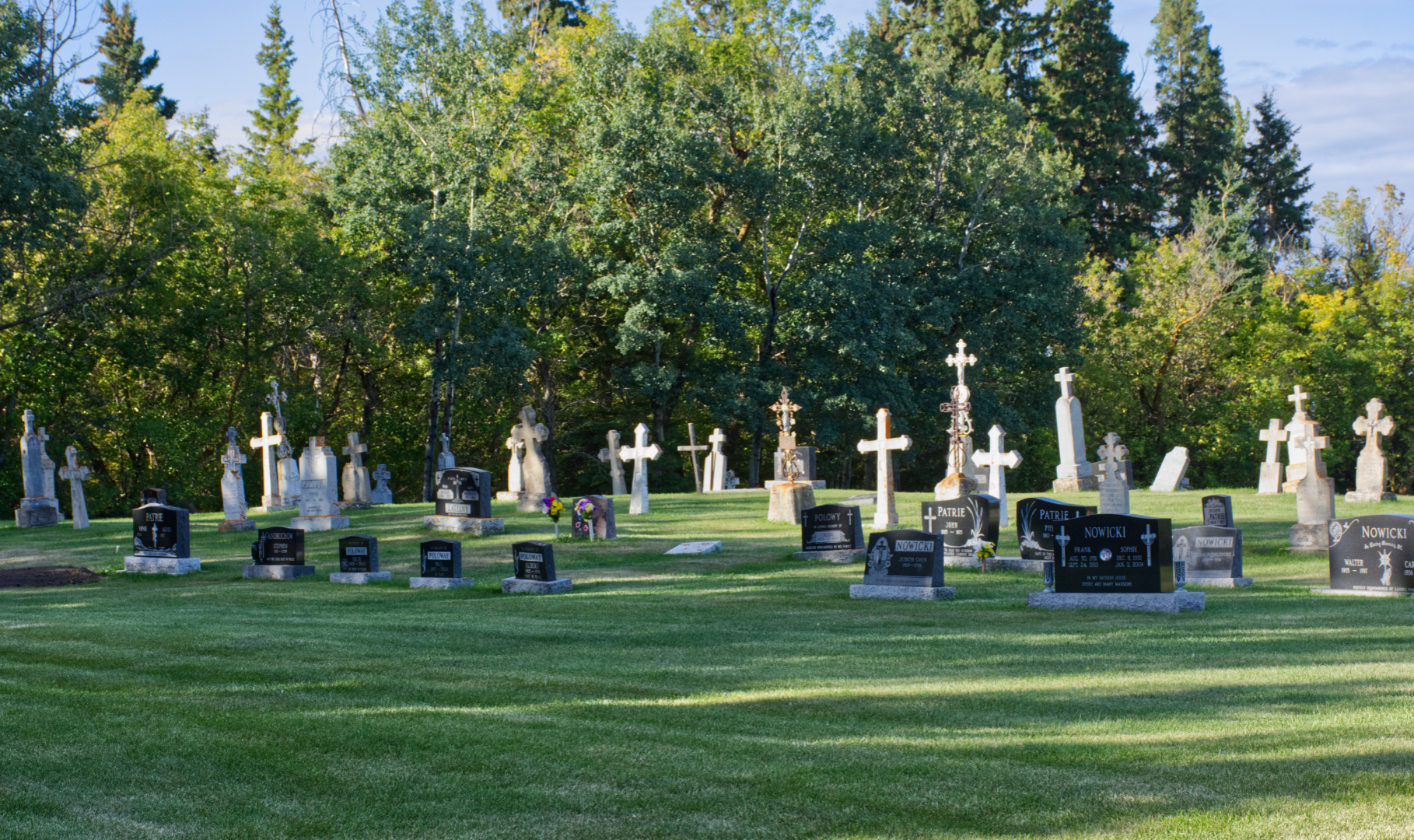
GPS Co-ordinates: 53.672602, -112.433719
Affiliation: Catholic Archdiocese of Edmonton
Roman Catholic Church of the Precious Blood – Krakow, AB
St. Anthony Roman Catholic Church – Haight (RCC)
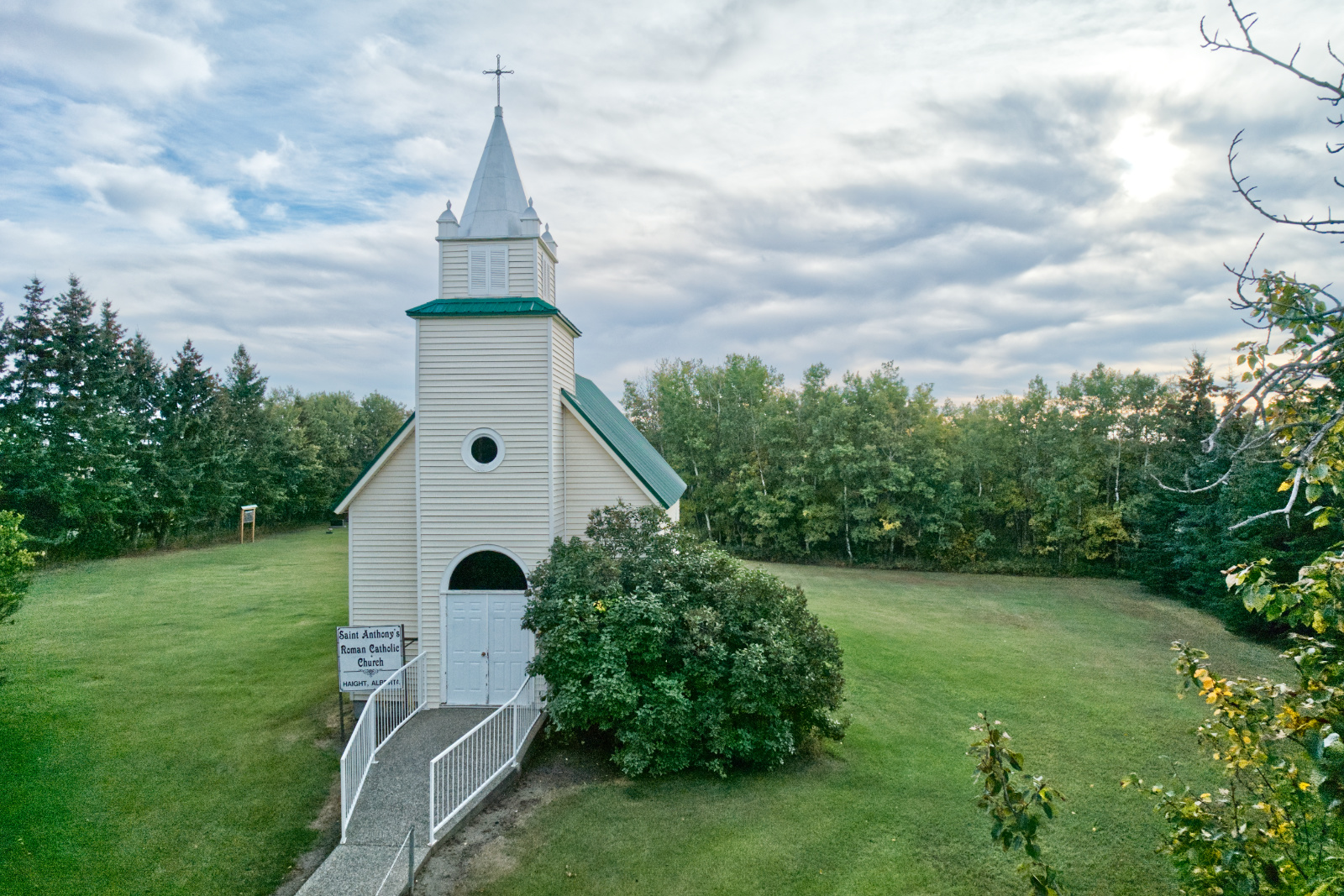
This church is still being researched to find some history on it.

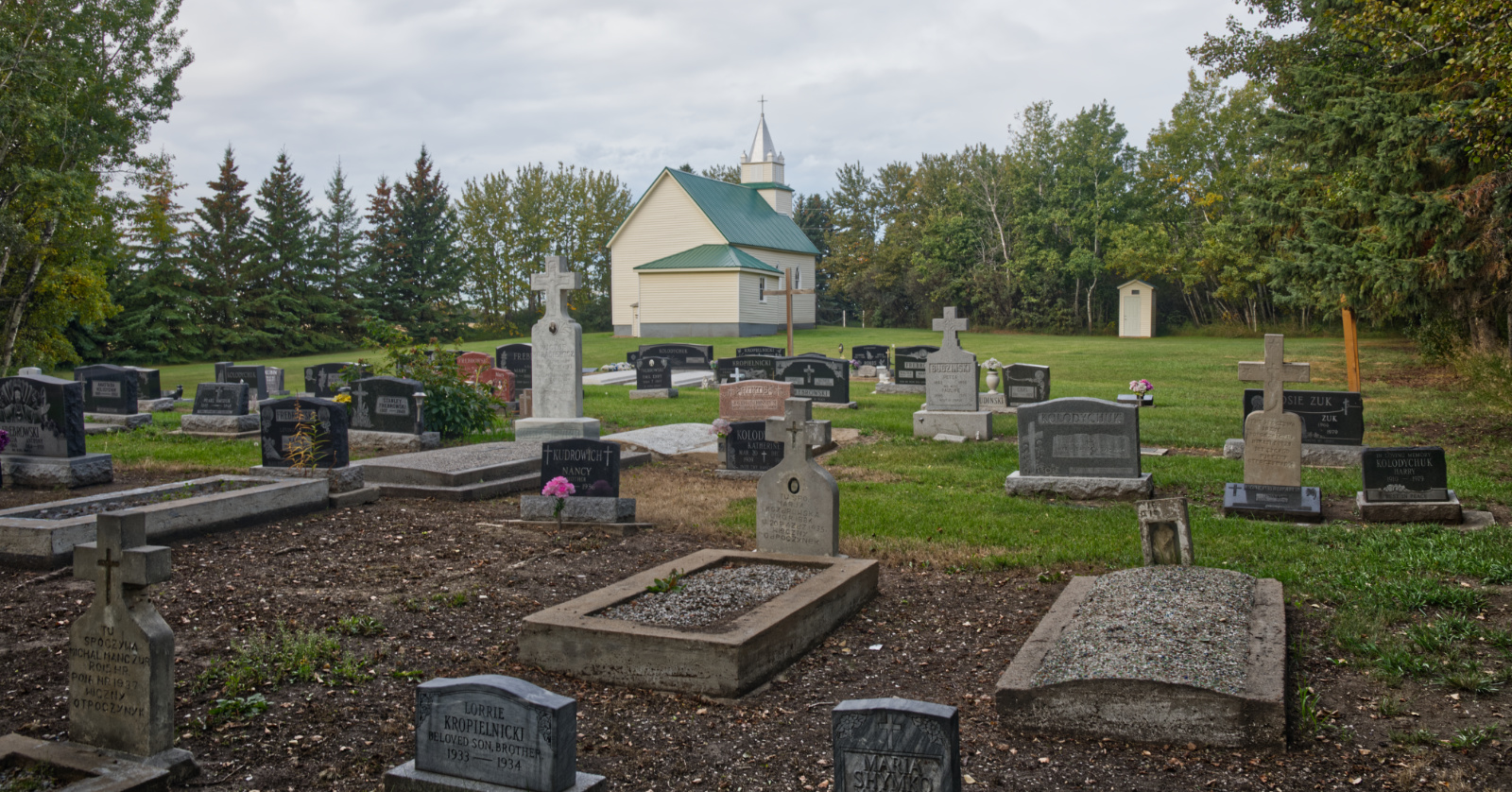
GPS Co-ordinates: 53.42134, -112.31275
Affiliation: Catholic Archdiocese of Edmonton
St. Anthony Roman Catholic Church – Haight, AB
St. John the Baptist Roman Catholic Church – Polska (RCC)
This church is still being researched to find out more about its history. The church was founded in 1903 and completed in 1917. The building was restored in 2010.

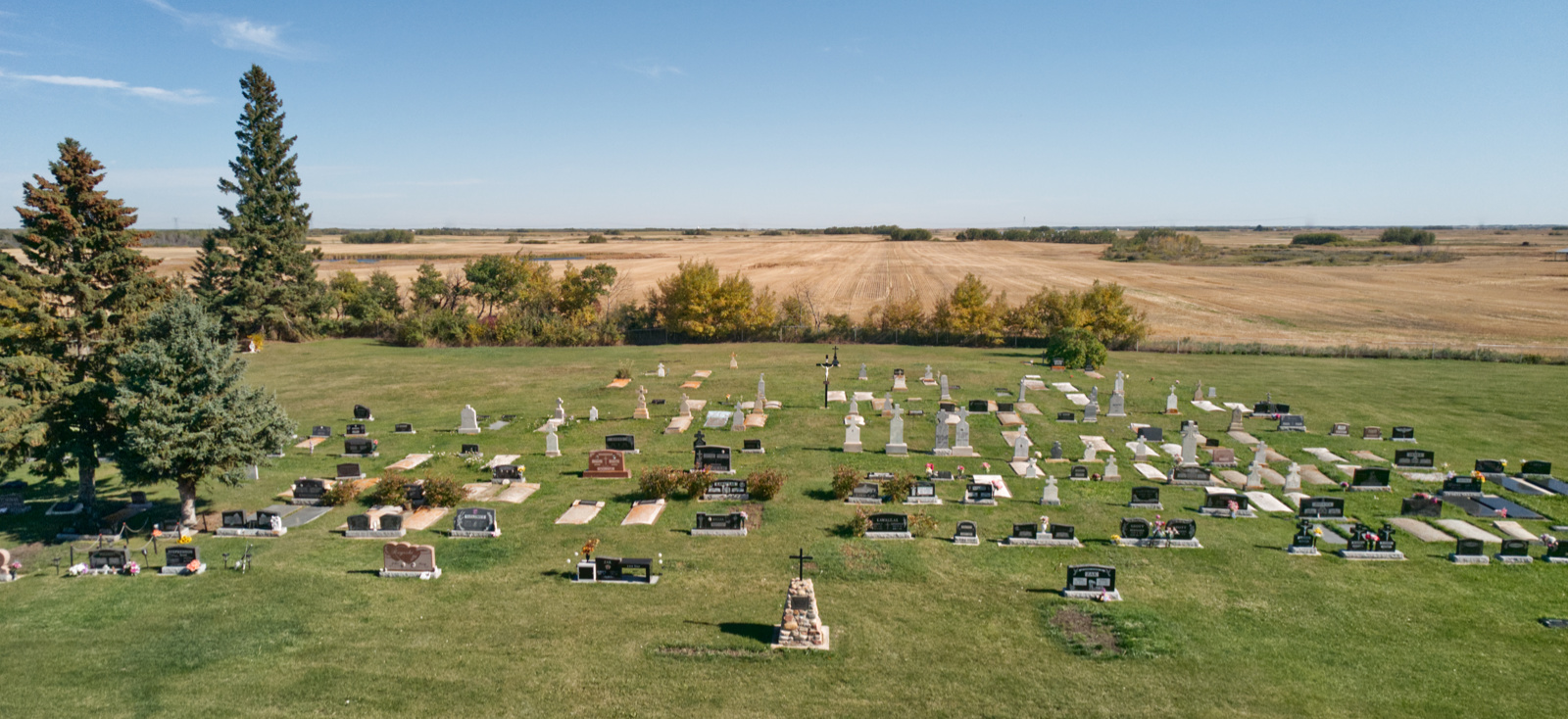
GPS Co-ordinates: 53.054336, -112.196665
Cemetery Co-ordinates: 53.0543885, -112.195593
Affiliation: Catholic Archdiocese of Edmonton
St. John Roman Catholic Church – Polska, AB
Romanian Orthodox Church of Saint Mary – Boian (ROC)
Aswas reported by the Archpriest Mircea Panciuk, by 1902, the little group of new settlers had chosen the Boian Hill as the site of their spiritual hearth, the church. The hill and surrounding area reminded them of their beloved homeland and the hill was the right site for their Temple. Although they were not trained in theology, they understood from their parents and grandparents that a Temple should be set on higher ground so as to be seen from afar and thus be a beacon for the faithful.
The building of the Temple began in earnest. This Temple was built not from architectural plans but from the memory of those who had left their beloved village Temple in which they had been baptized and married, and from which they had set out on this journey to a new way of life. Thus, the Temple on the hill in Boian, Alberta is an exact replica of the Temple in Boian, Bukovina.
Very large stones were hauled from neighbouring farms, in order to form a foundation for the Temple. Timbers were cut from logs that had been cut on the banks of the North Saskatchewan River. They had to be hauled by wagon to the site. Each man in the parish community was to donate $20.00 and to volunteer 20 days of labour towards the construction of the Temple. The chief carpenter was Elie Ravliuk, who was paid $200.00 for his work. The Temple was constructed in accordance with the design of a Temple in Boian, Romania, in accordance with their collective memory. A bell-house was constructed separately, to stand nearby the Temple.
The Temple of the Nativity of the Mother of God (Saint Mary's) was completed in 1905. Soon, a priest was found who would bless it. It was sanctified by the Priest Mihailo (Michael) Ion Skibinsky (Ion Strembisk) from Wostok on 2 August 1905. He was at that time caring for other parishes in the region.
Saint Mary’s Romanian Orthodox Church of Boian is a typical rural vernacular building, built between 1903 and 1905. The Temple is a log structure covered with siding, and it is located on a property of 14.8 hectares in a rural setting approximately 9.7 kilometres east of Willingdon, in Central Alberta.
The heritage value of the Saint Mary’s Romanian Orthodox Church of Boian lies in its association with the Romanian settlement in the Willingdon-Hairy Hill district at the turn of the twentieth century. It is also a good example of the vernacular Orthodox Church architecture found in the prairie west.
The first substantial Romanian community to establish itself in western Canada arrived in the Boian area in 1898, as part of the wave of European immigration flooding the prairie west at the turn of the twentieth century. Constructed by the settlers, the Temple has been used continuously since 1905 for regular services, christenings, funerals and weddings of the Romanian people. It is one of the oldest Romanian Orthodox churches still in use in North America.
Interesting architectural features include the belfry, cupola, fanlight window, and the Altar and sacristy contained in the east elevation. The pioneer log construction was covered with wood siding in 1918, and with stucco in 1948. It is one of a number of Eastern European churches in the region and contributes to the cultural landscape.
Go HERE for more information and history of this parish.
NOTE: This church was severely damaged by a major fire on June 6, 2023.
St. Mary Cemetery
Since 2 persons fell asleep in the Lord in 1901, it was necessary quickly to set aside a property for the purpose of establishing a cemetery. In 1901, Vasile Romanko donated 40 acres for the purpose of establishing a cemetery and constructing a Temple. The first 3 trustees were Konstantin Kachuk, Ion T. Toma and Mihai T. Yurko. The cemetery was blessed by the Priest Jacob Korchinsky, who by that time was moving from Wostok to Edmonton.
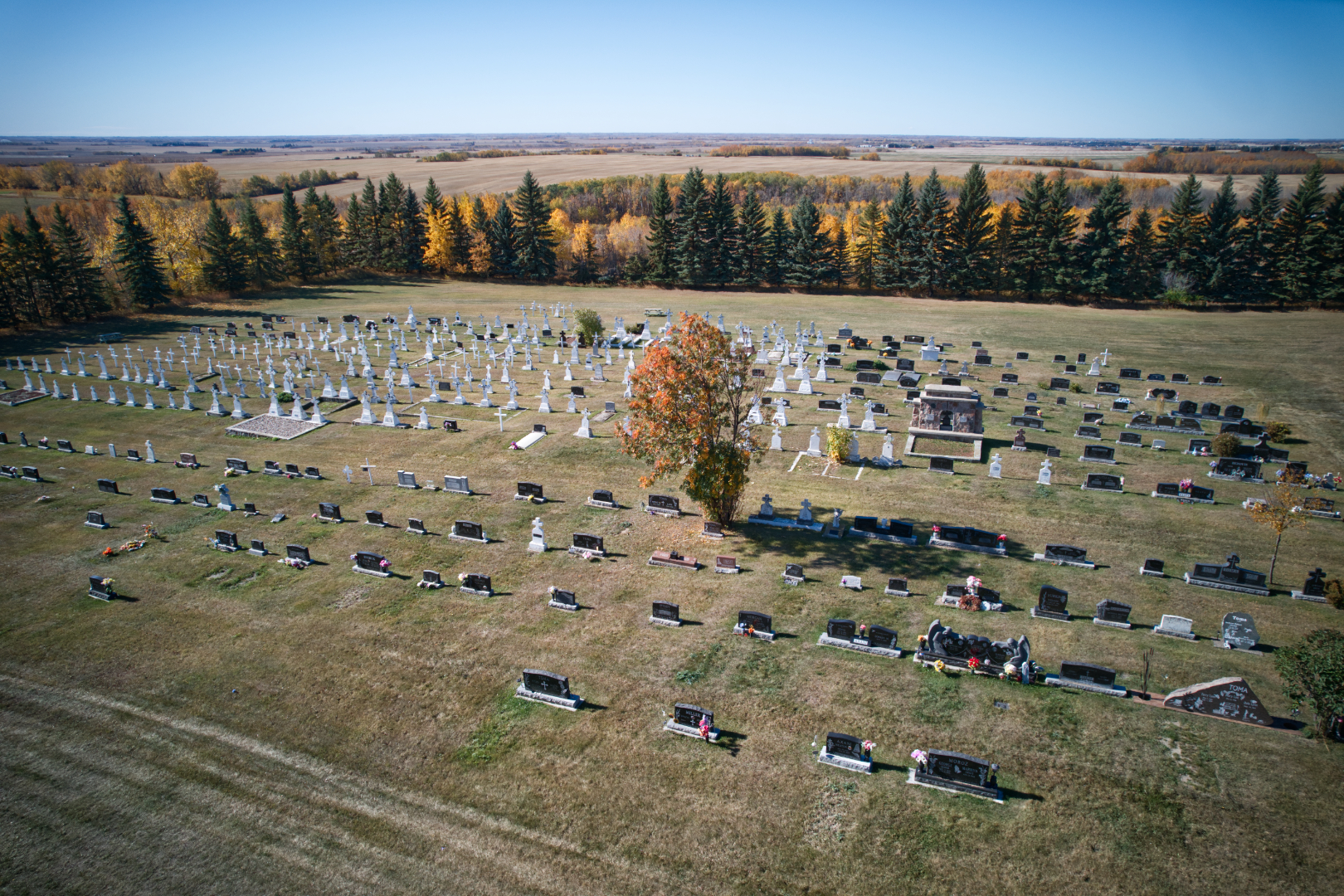
GPS Co-ordinates: 53.829484, -112.00517
Affiliation: Romanian Orthodox Diocese of Canada


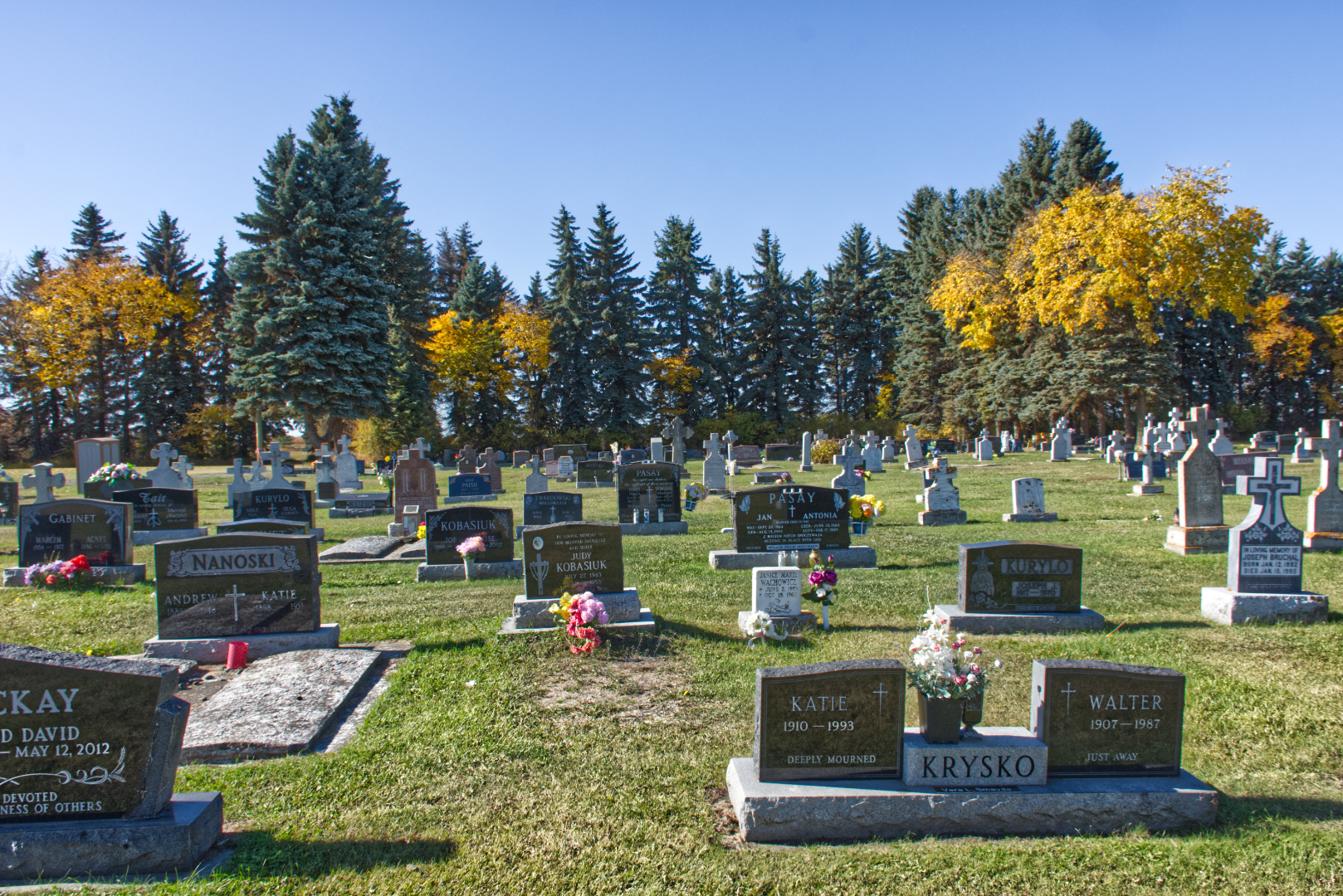


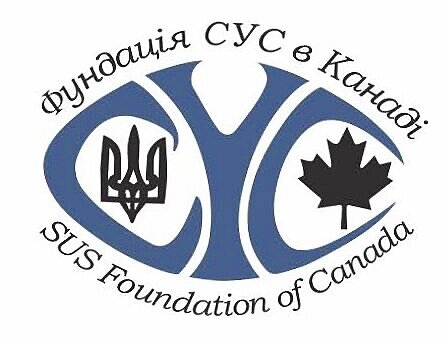 Financial support generously provided by:
Financial support generously provided by: 